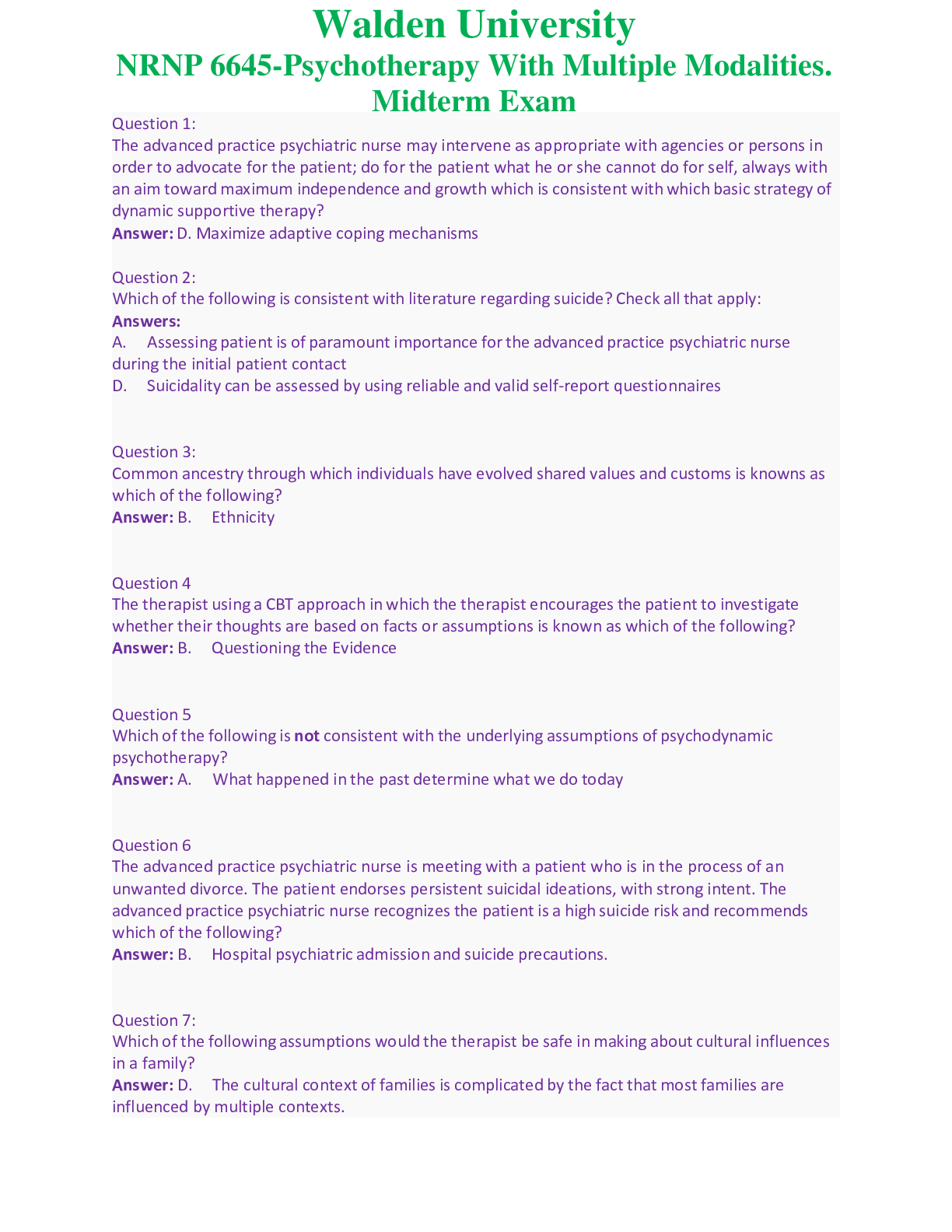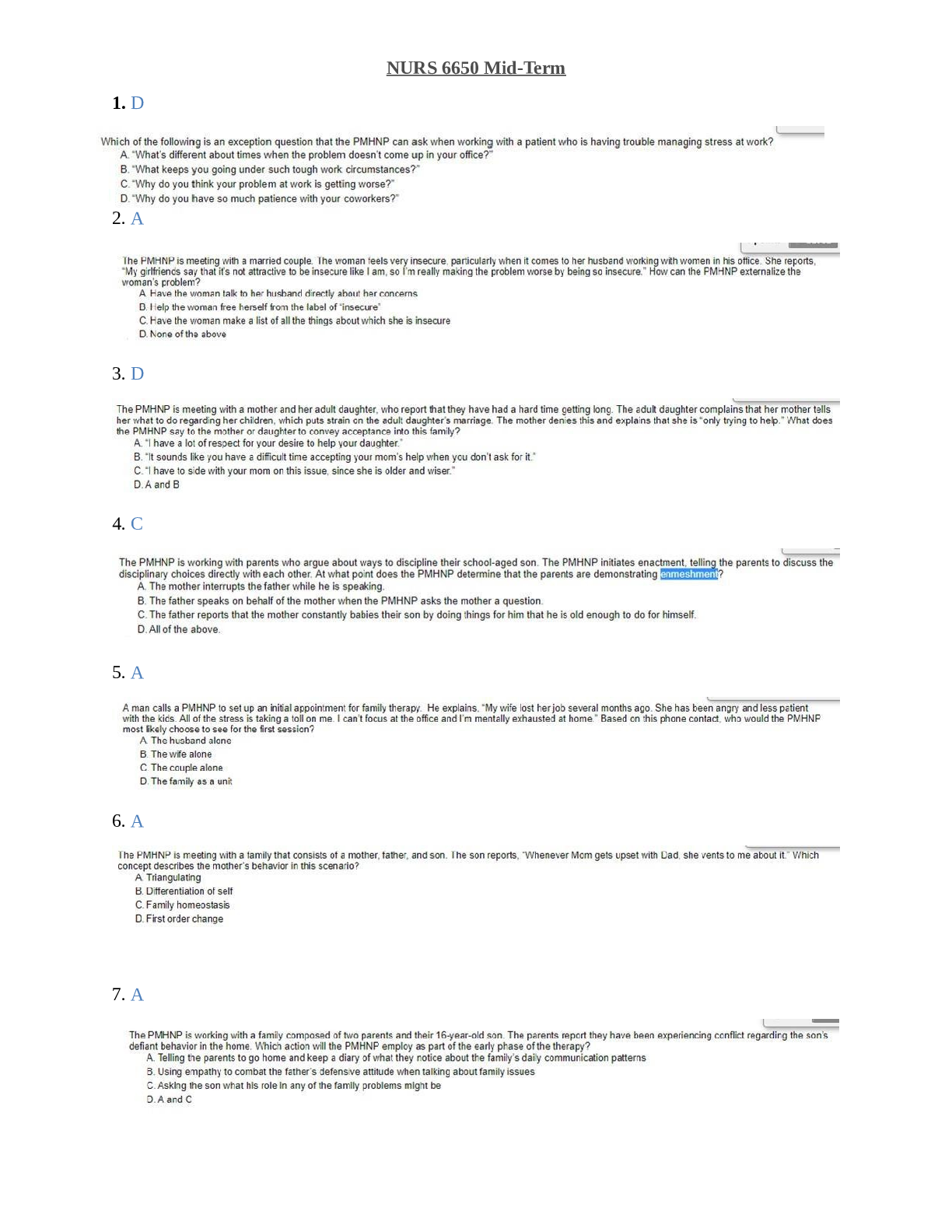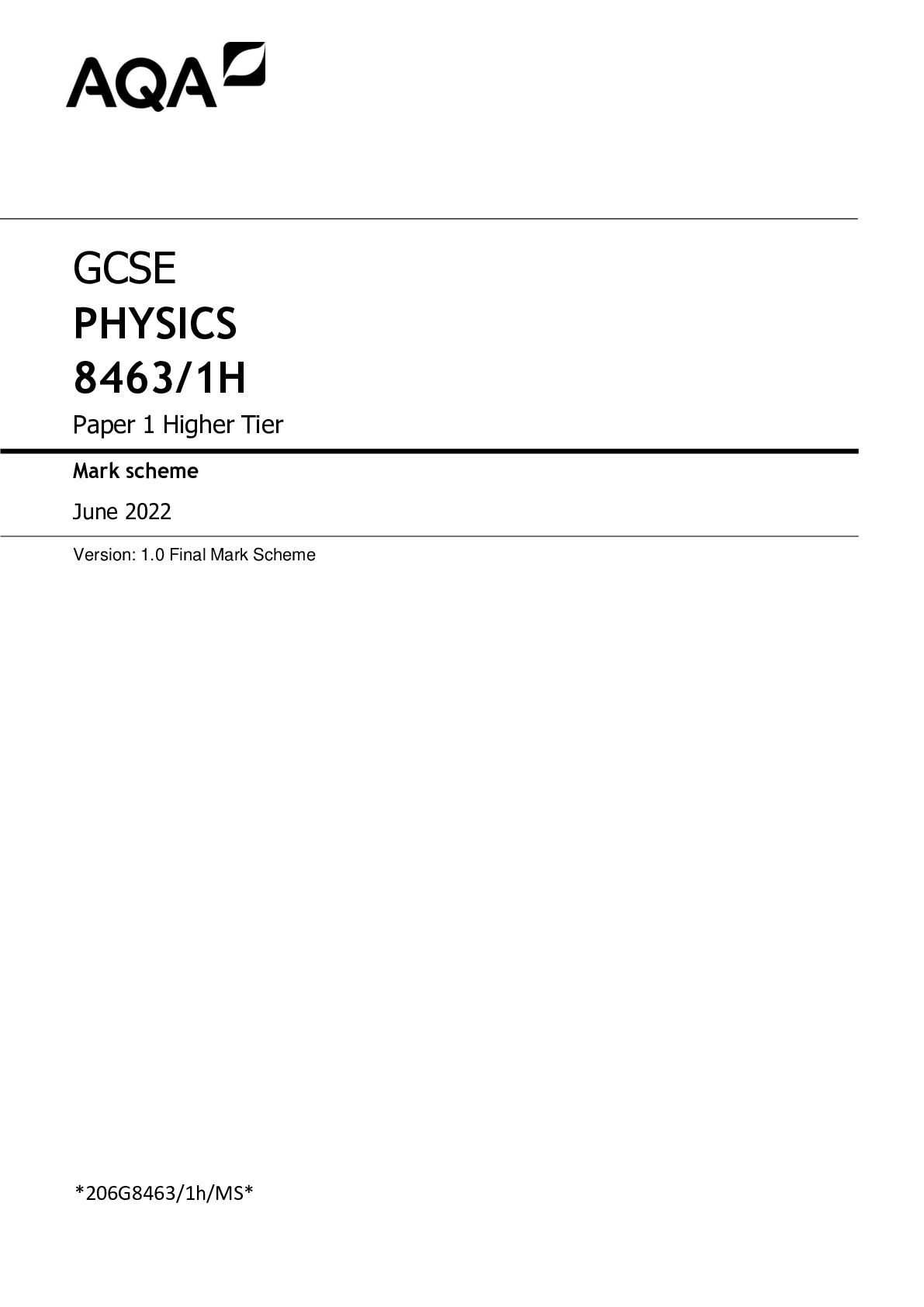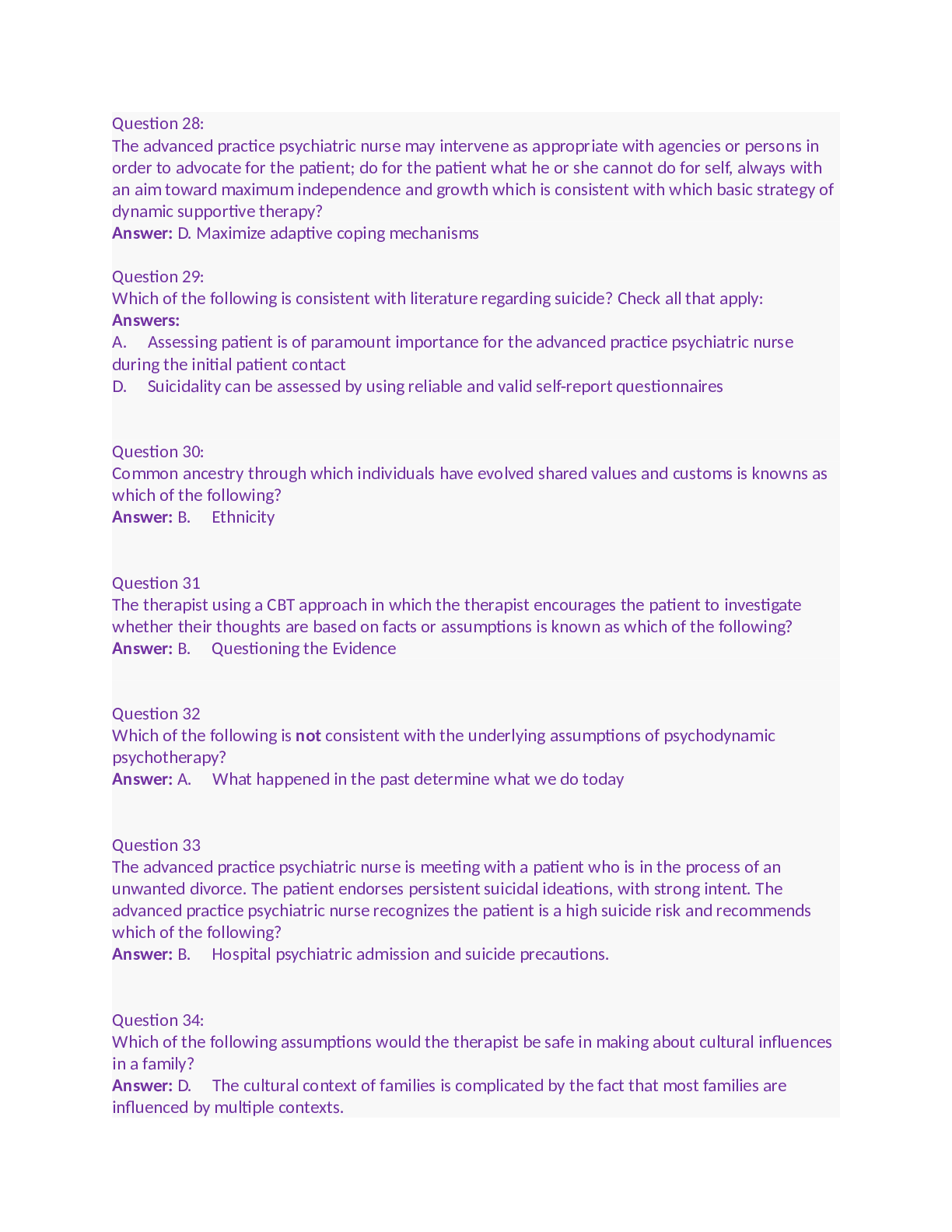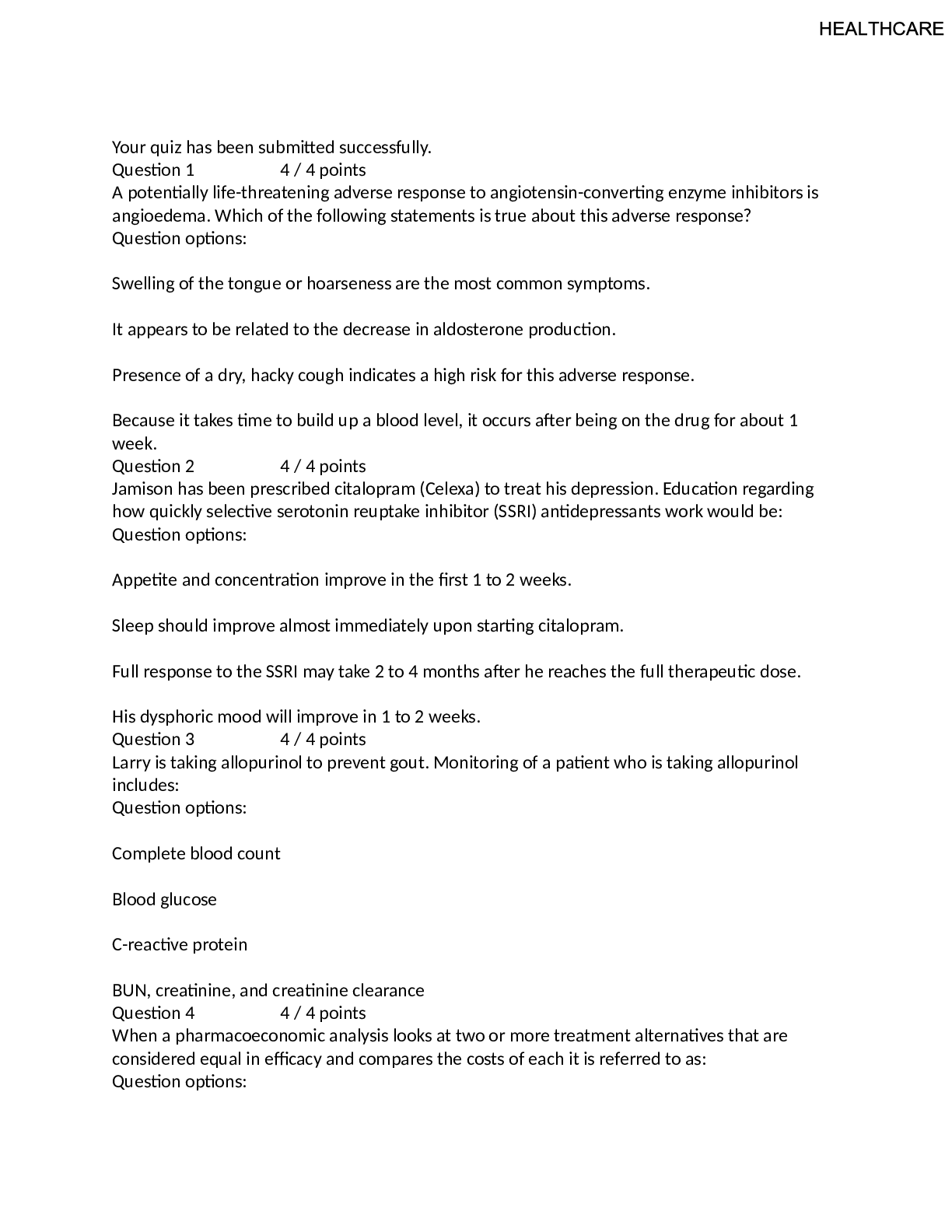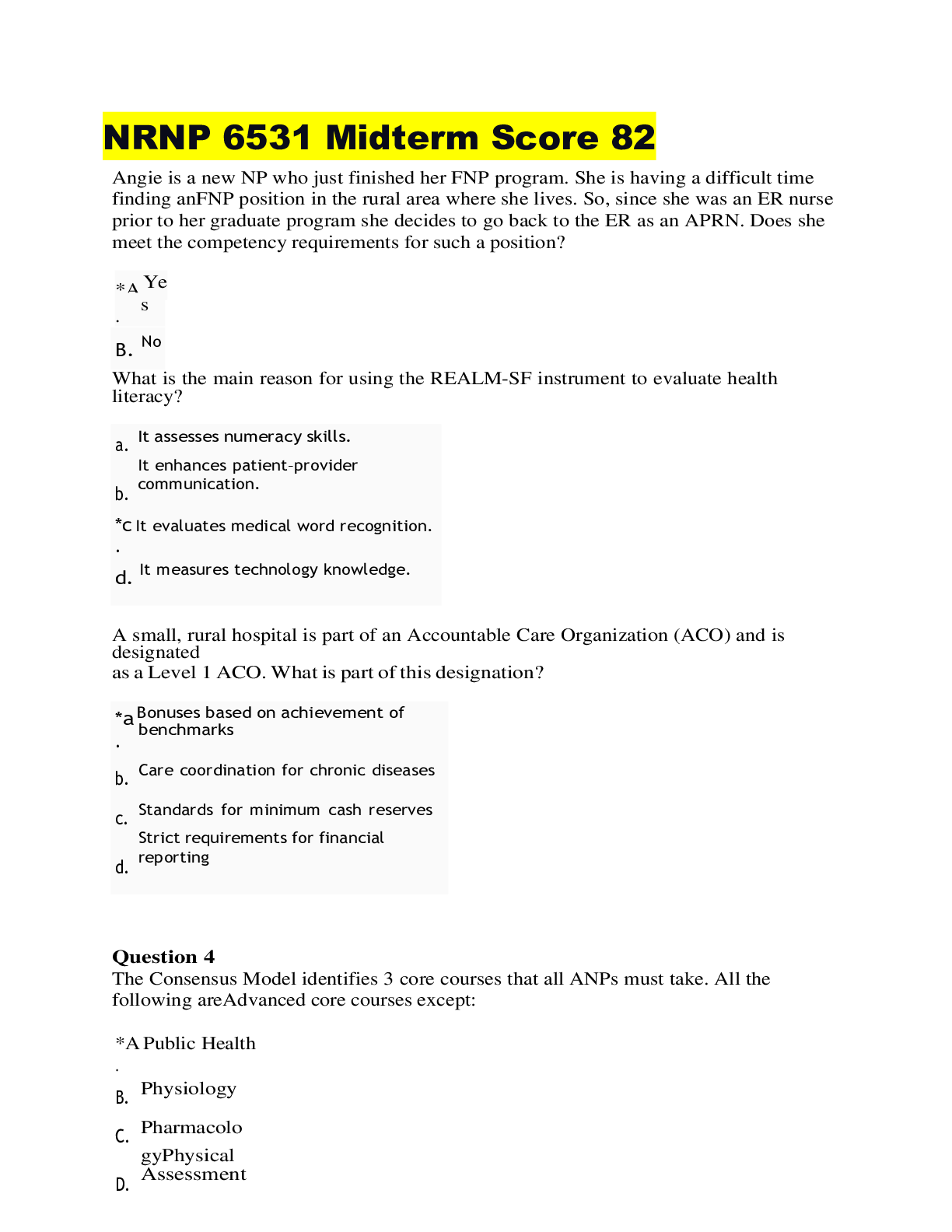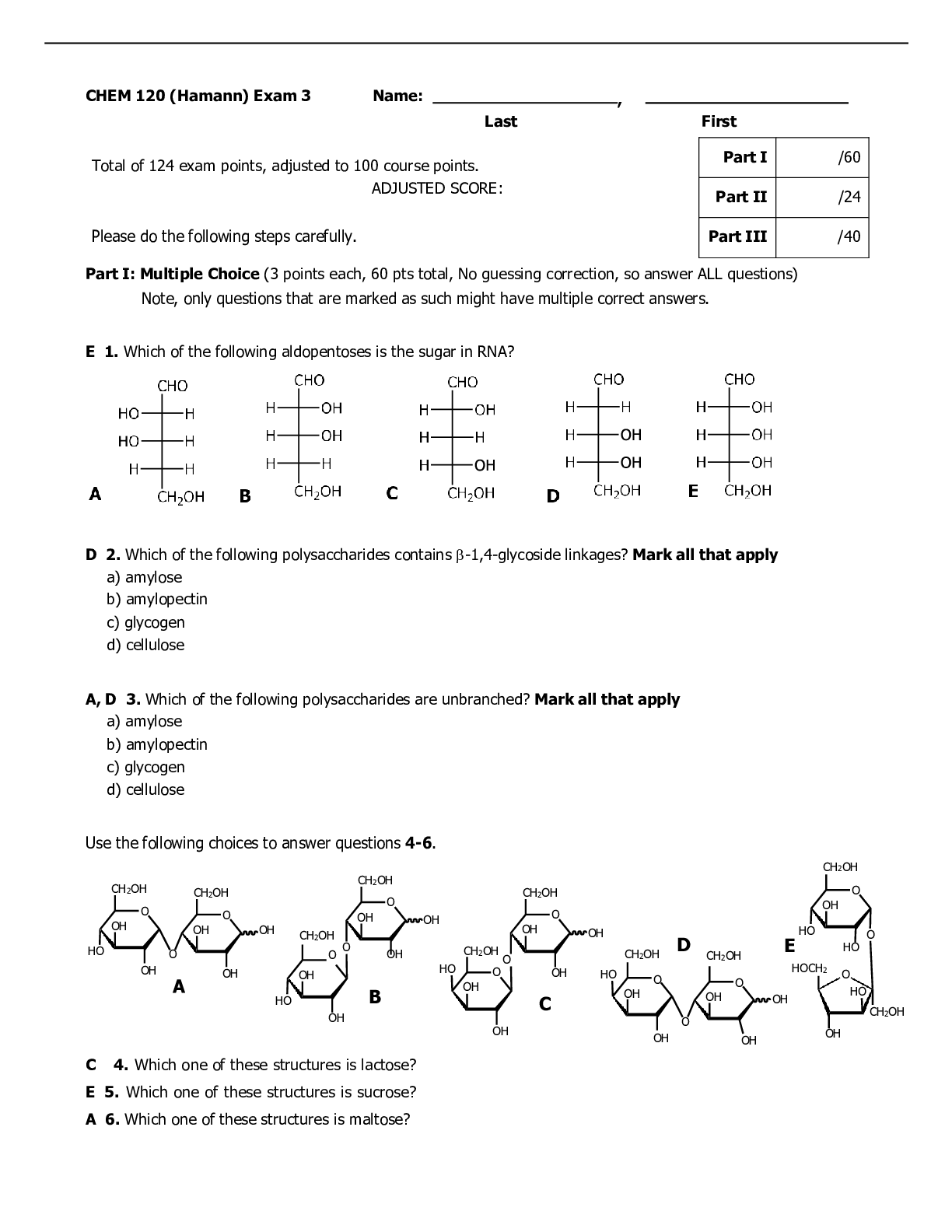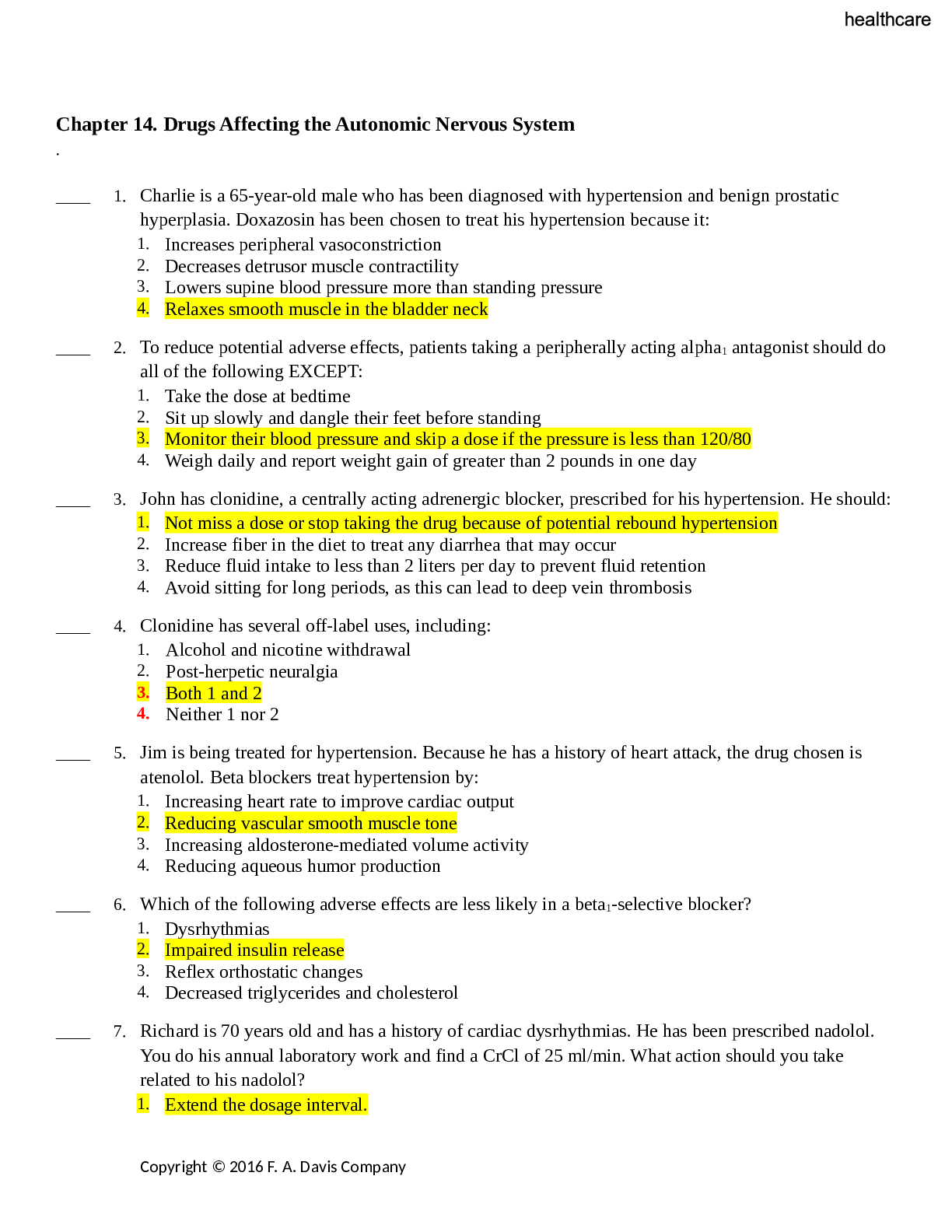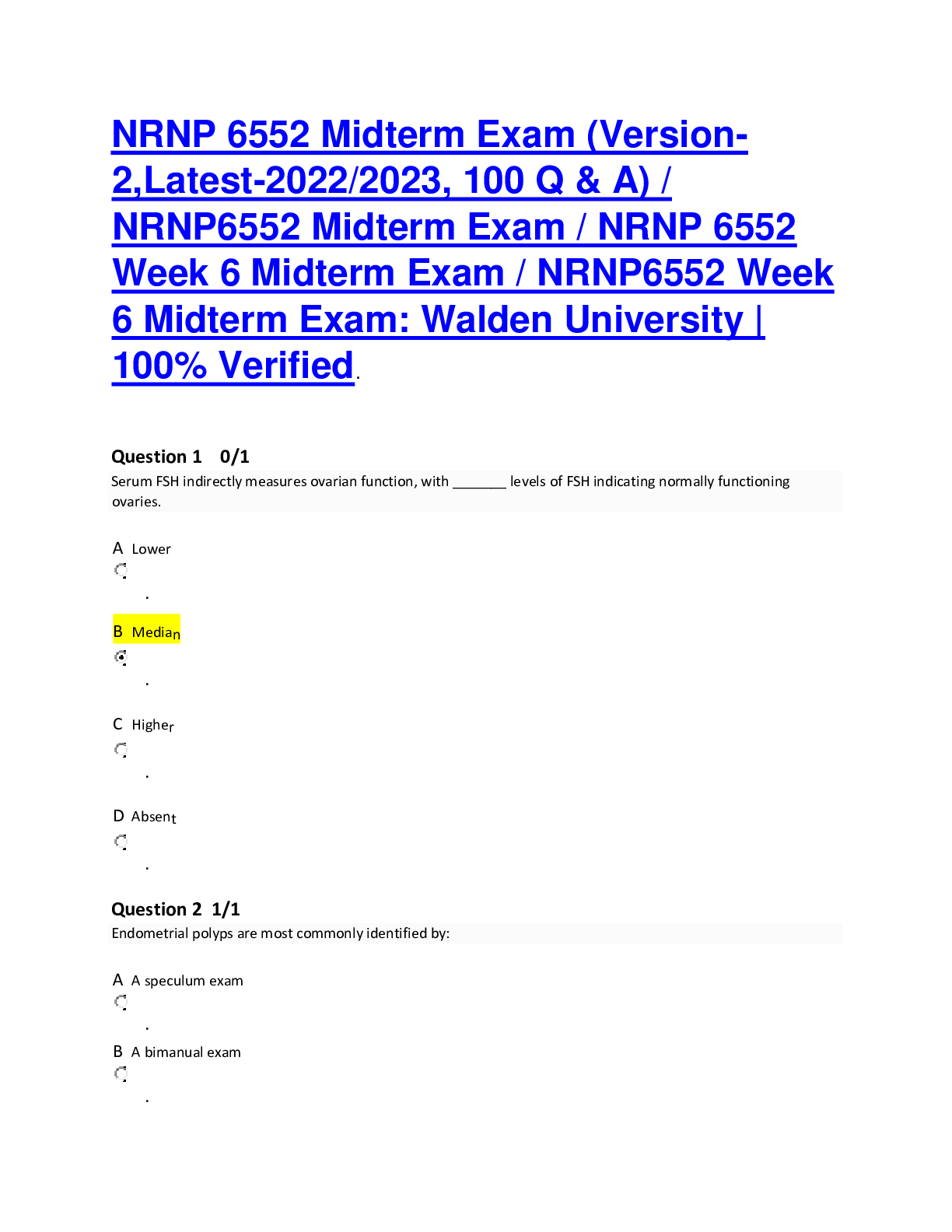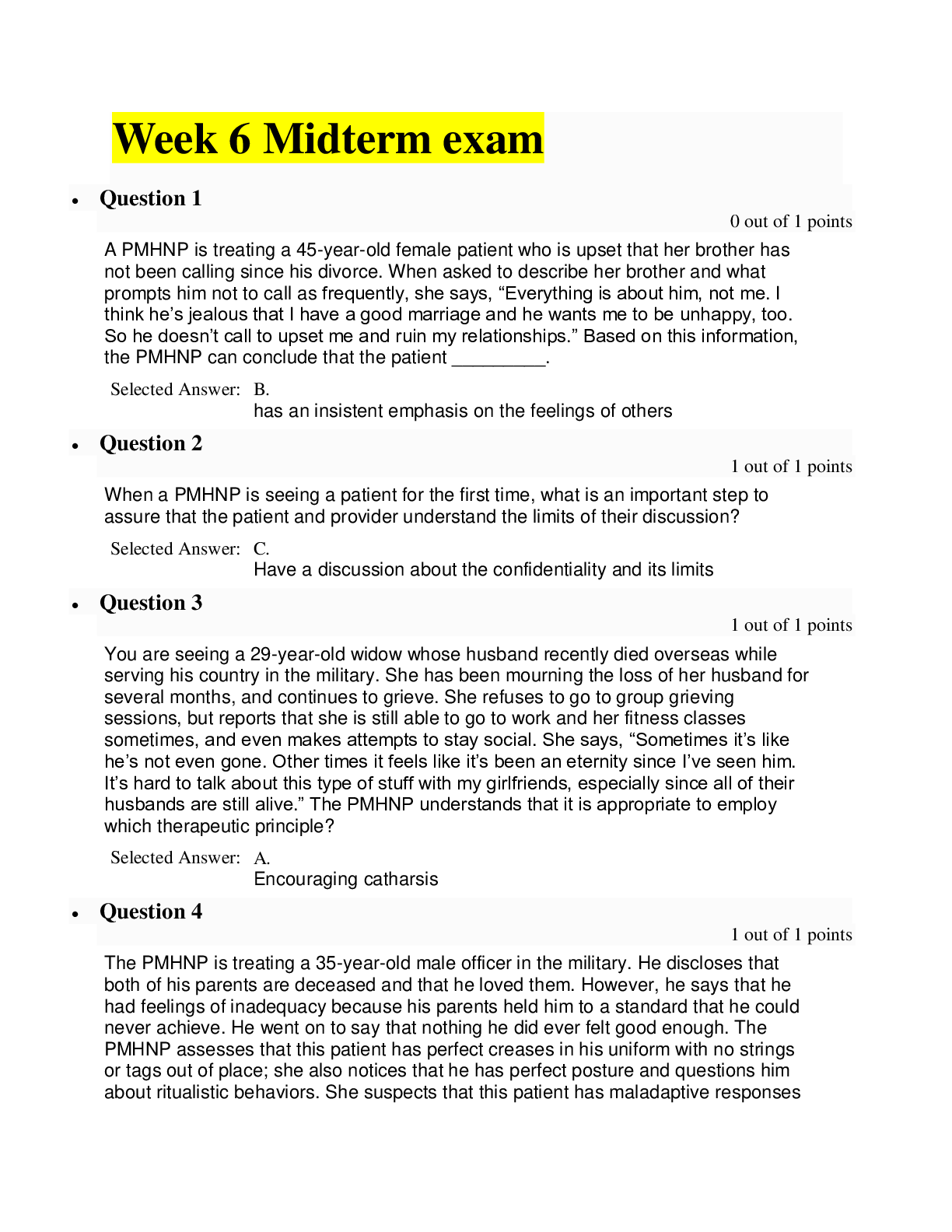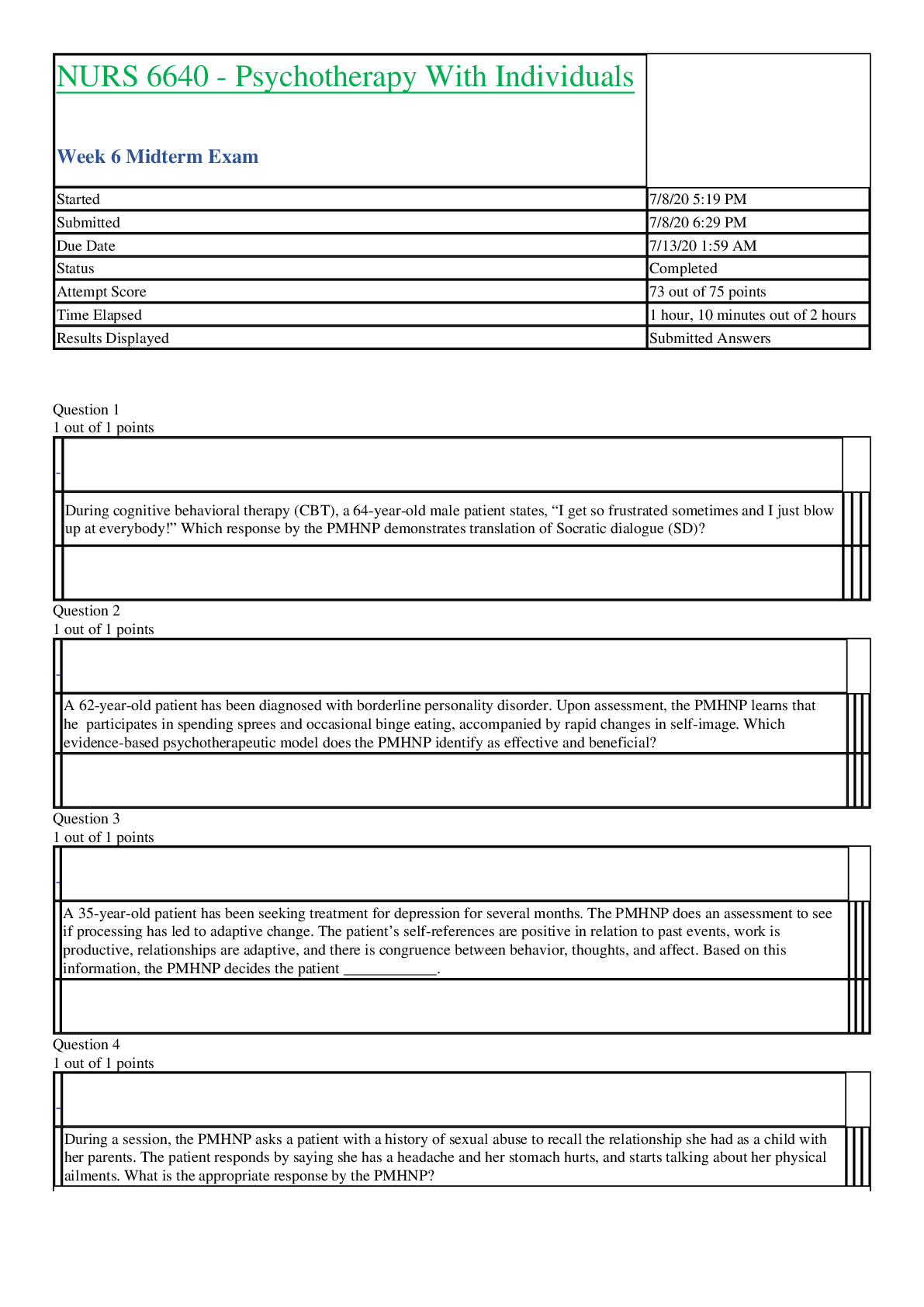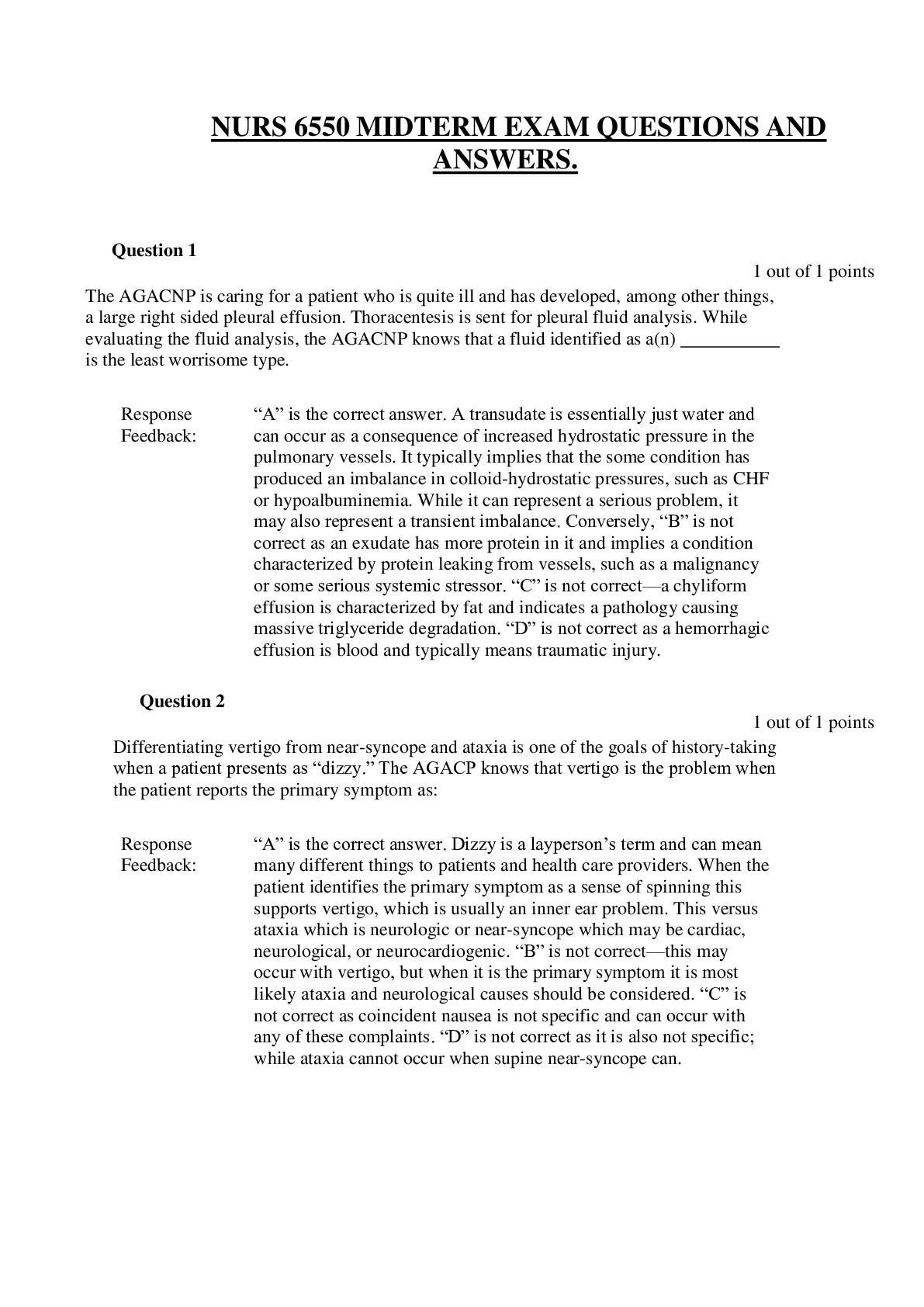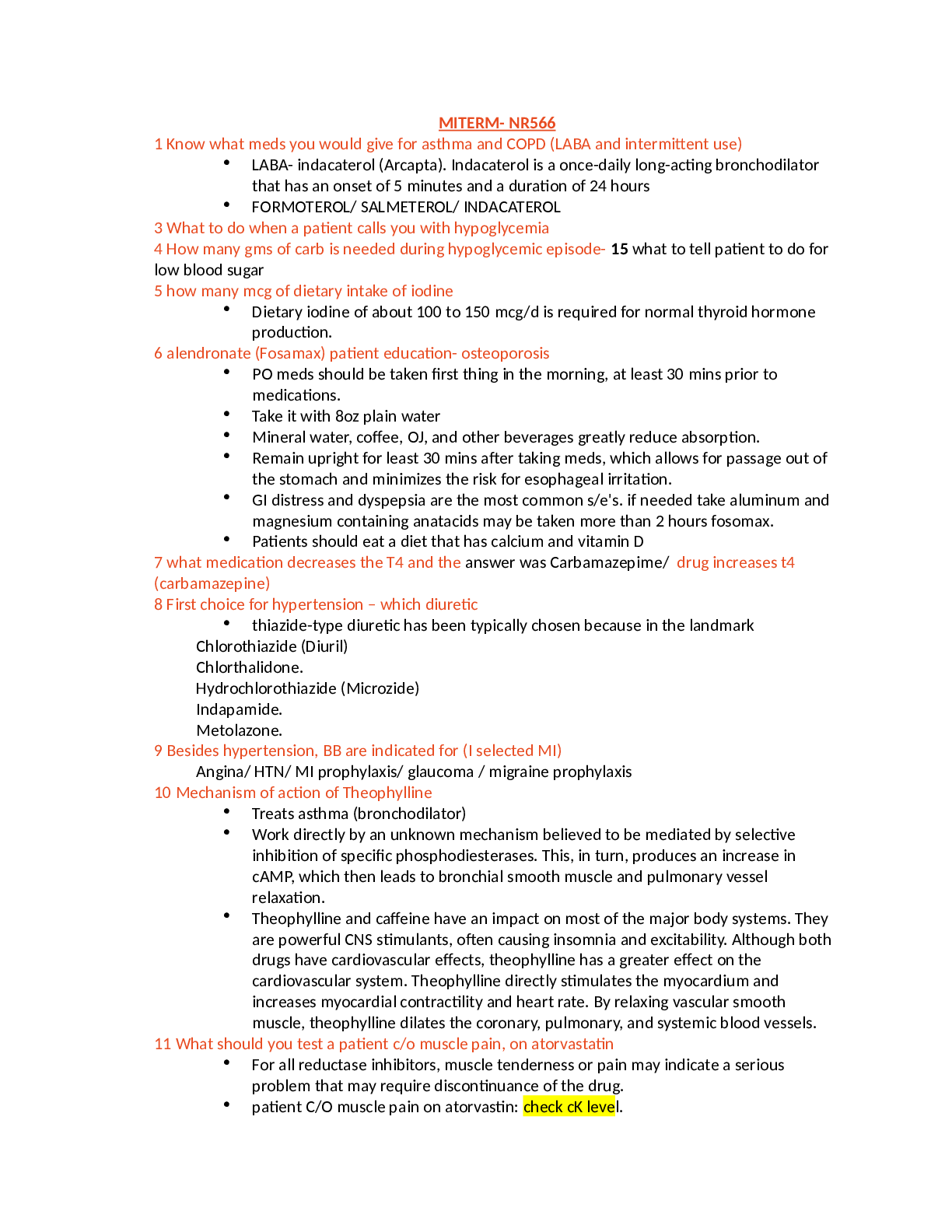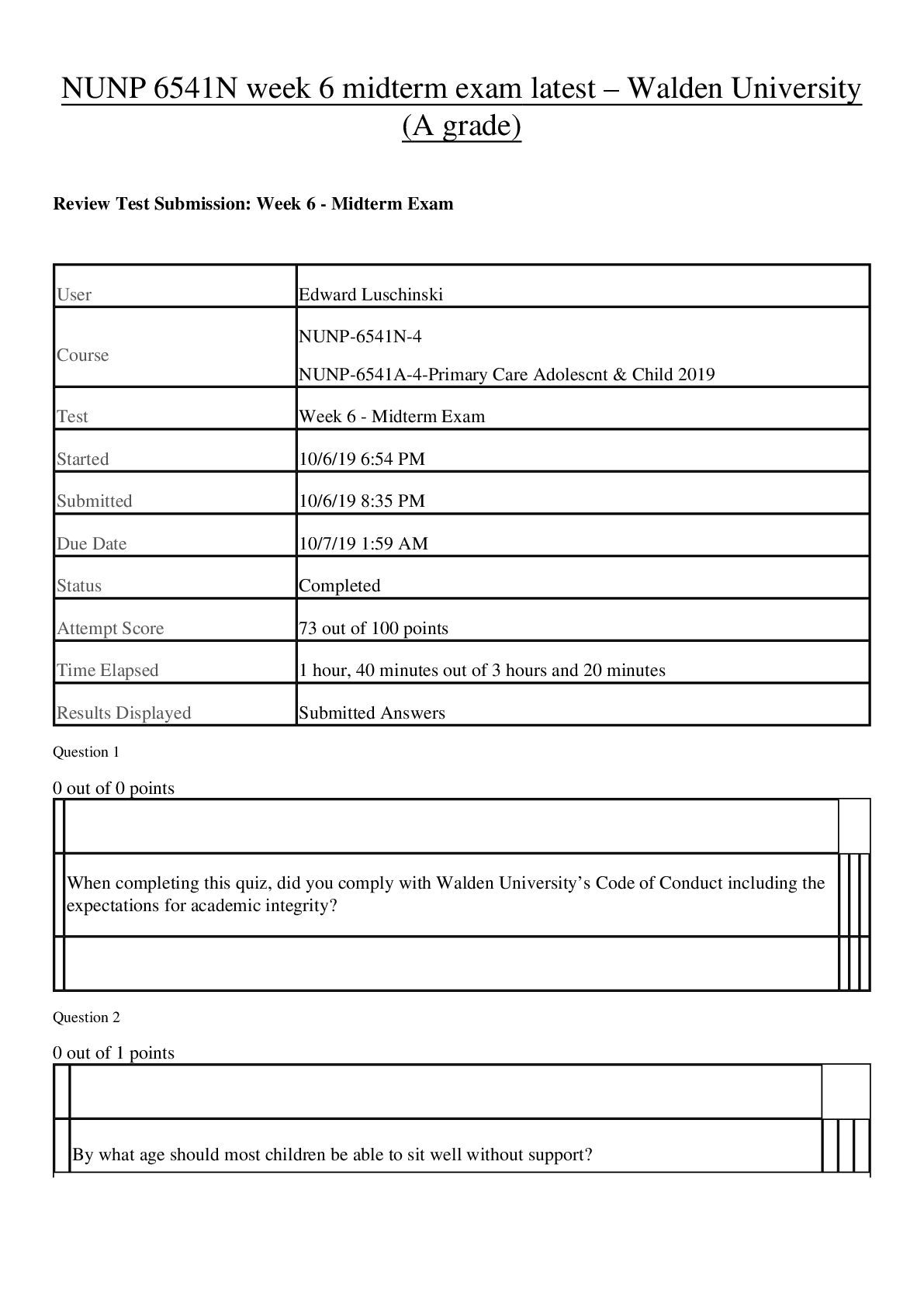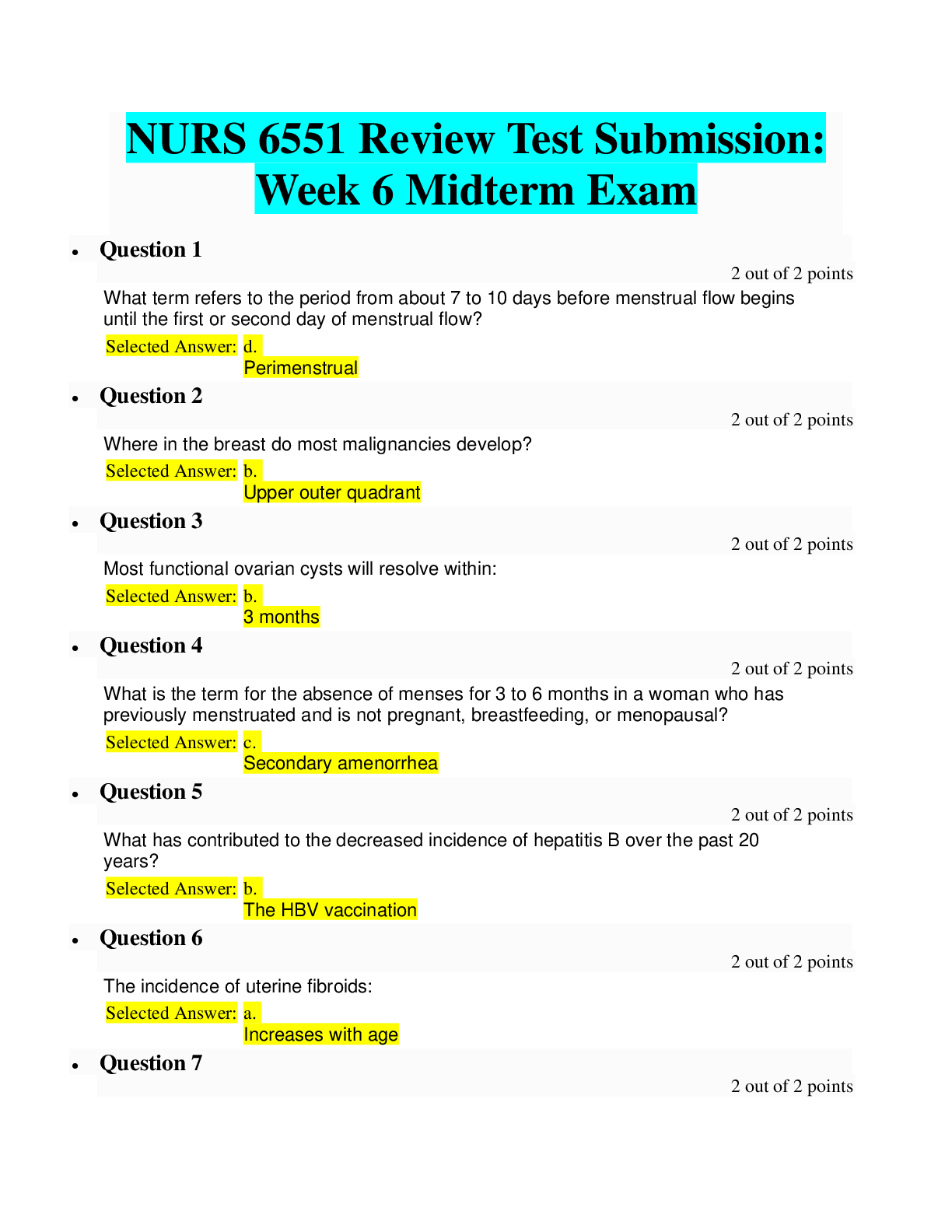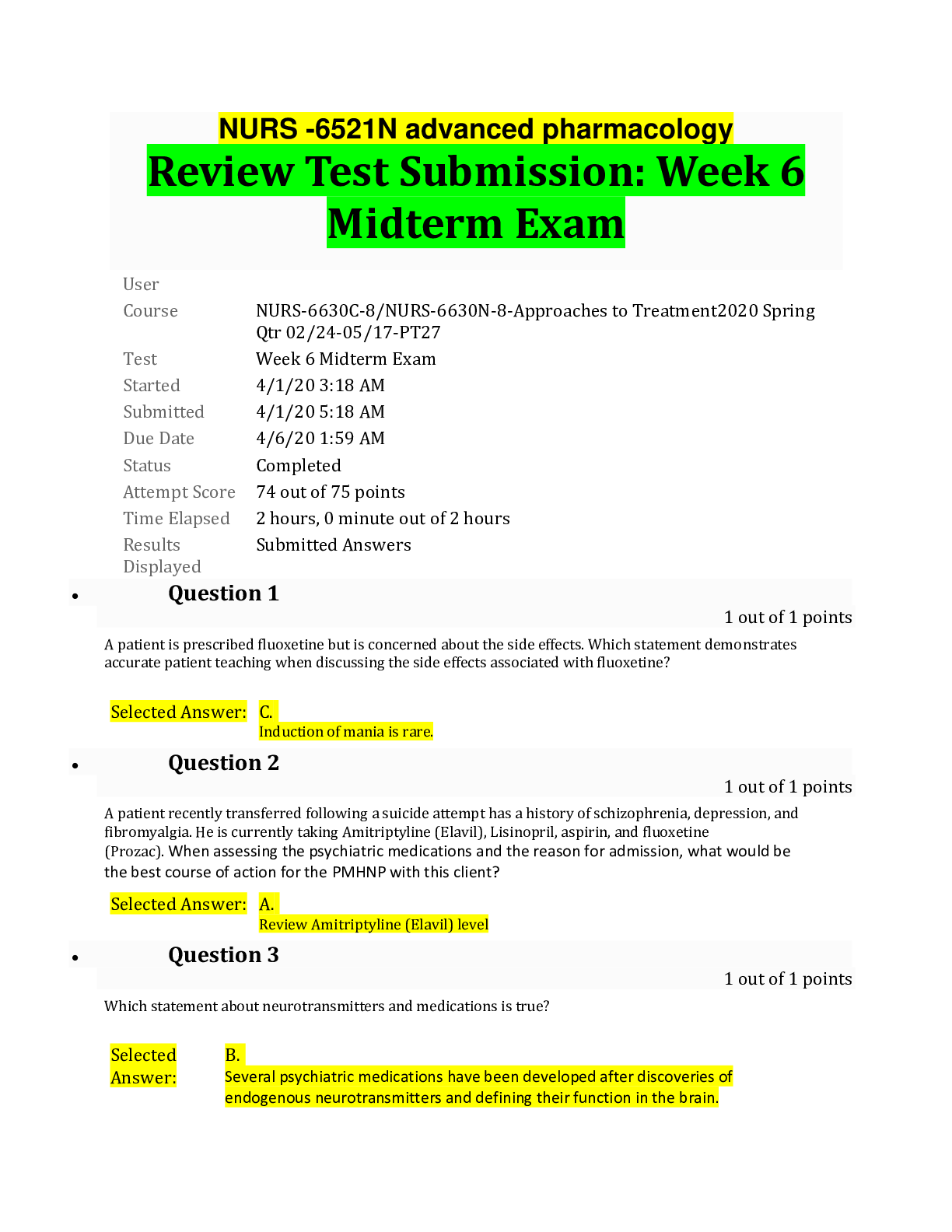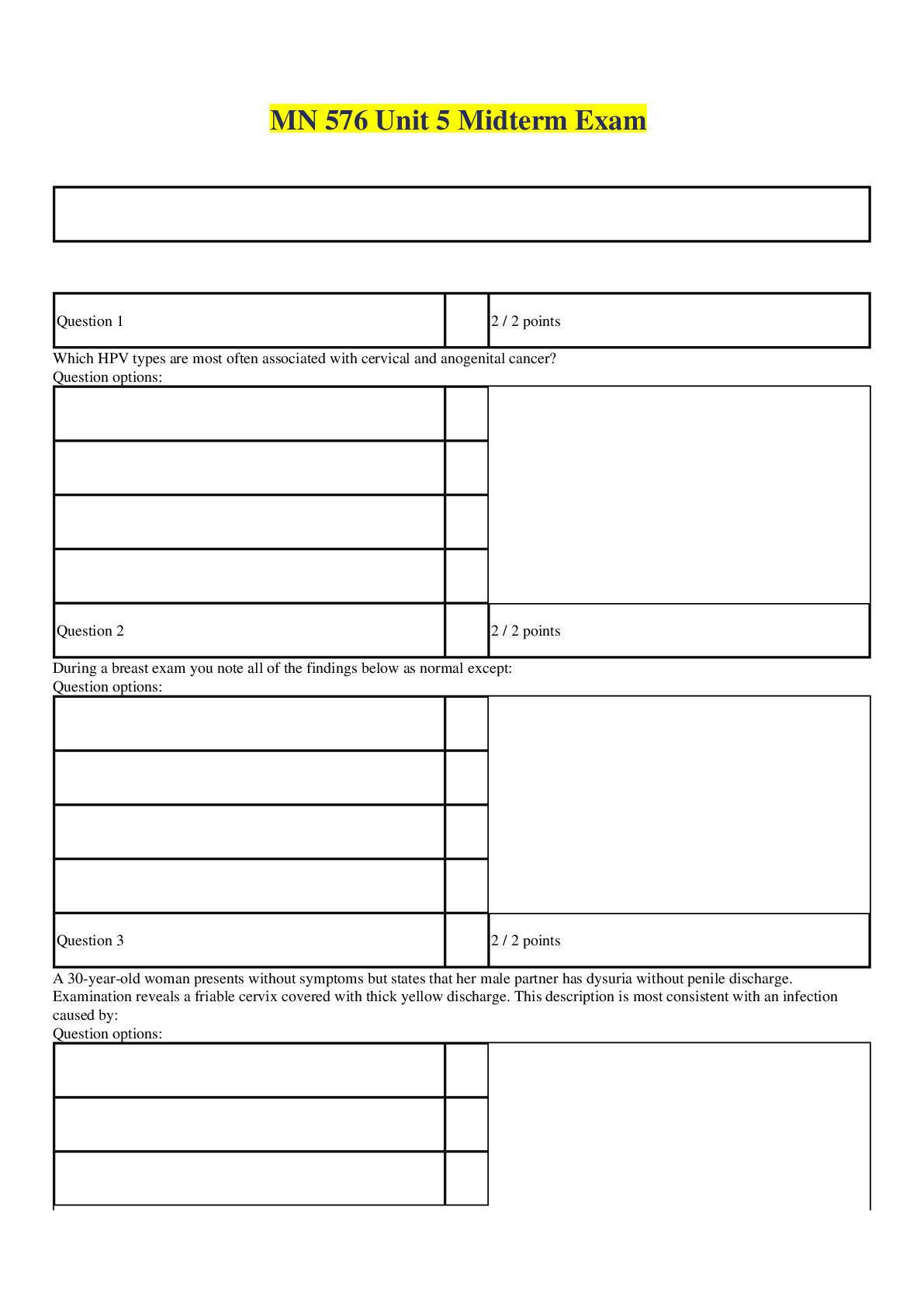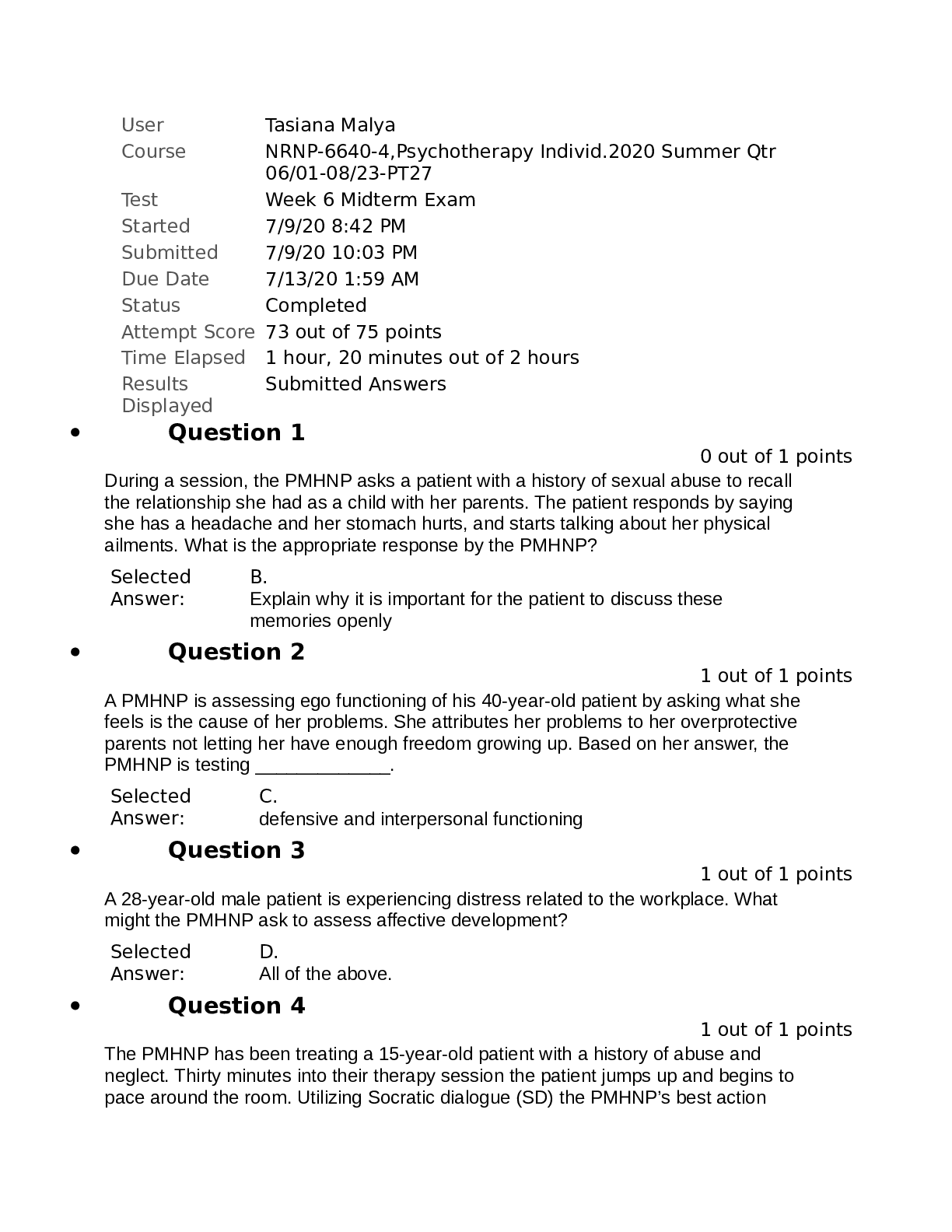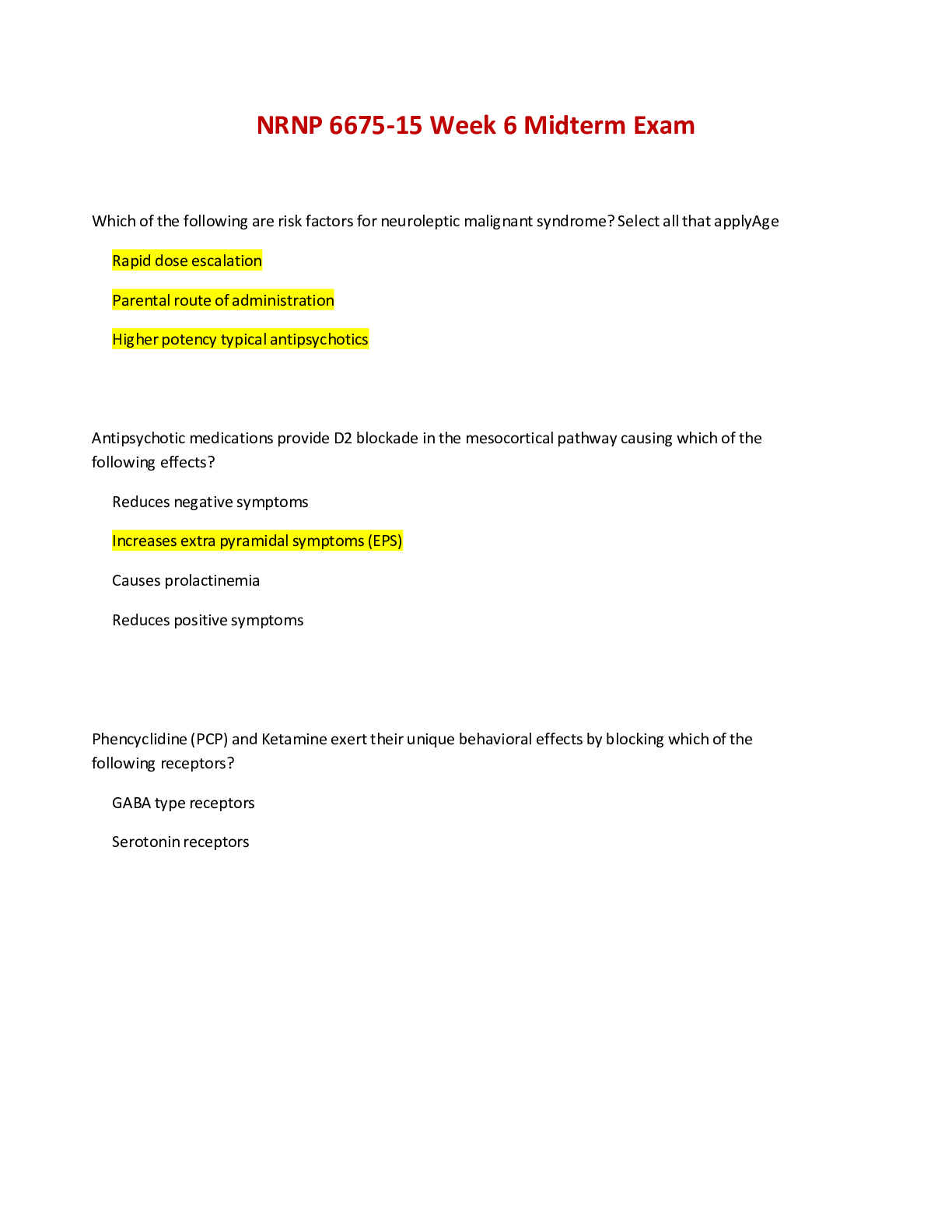*NURSING > EXAM > Walden University NURS 6640 Week 6 Midterm Exam - Questions with Verified Answers (All)
Walden University NURS 6640 Week 6 Midterm Exam - Questions with Verified Answers
Document Content and Description Below
Question 1 1 out of 1 points During cognitive behavioral therapy (CBT), a 64-year-old male patient states, “I get so frustrated sometimes and I just blow up at everybody!” Which response by the... PMHNP demonstrates translation of Socratic dialogue (SD)? Selected Answer: B. “When you say blow up, what exactly does blow up mean and how does it feel to you?” Question 2 1 out of 1 points A 62-year-old patient has been diagnosed with borderline personality disorder. Upon assessment, the PMHNP learns that he participates in spending sprees and occasional binge eating, accompanied by rapid changes in self-image. Which evidence-based psychotherapeutic model does the PMHNP identify as effective and beneficial? Selected Answer: C. Dialectical behavior therapy Question 3 1 out of 1 points false A 35-year-old patient has been seeking treatment for depression for several months. The PMHNP does an assessment to see if processing has led to adaptive change. The patient’s selfreferences are positive in relation to past events, work is productive, relationships are adaptive, and there is congruence between behavior, thoughts, and affect. Based on this information, the PMHNP decides the patient ____________. Selected Answer: C. is ready to move to Stage III, future visioning Question 4 1 out of 1 points During a session, the PMHNP asks a patient with a history of sexual abuse to recall the relationship she had as a child with her parents. The patient responds by saying she has a headache and her stomach hurts, and starts talking about her physical ailments. What is the appropriate response by the PMHNP? Selected Answer: A. Assure the patient that she does not have to discuss these memories Question 5 1 out of 1 points A 24-year-old female patient presents for her initial appointment with the PMHNP. Which action will the PMHNP take to establish therapeutic alliance? Selected Answer: D. All of the above Question 6 1 out of 1 points The PMHNP is working with a school-aged child who has been diagnosed with depression. The child has attended several sessions with the PMNHP, but recently presents with avoidant behavior by showing increased distress and being late to sessions. What approach does the PMHNP need to employ with the child to continue making therapeutic progress? Selected Answer: B. Using communication techniques that are expressive Question 7 1 out of 1 points The PMHNP has been assisting a shy and timid 23-year-old male patient struggling with esteem and self-concept issues. Over the weekend, this patient was given the task of completing an exercise that would usually cause him distress and shame, also called a shameattacking exercise. The PMHNP determines that this task has successfully been achieved when the patient states: Selected Answer: A. “I was able to eat in public yesterday despite how loudly I chew.” Question 8 1 out of 1 points The PMHNP is meeting with a new patient who is a young veteran back from serving two tours overseas. When reviewing the patient’s health history file that was sent from the VA, the PMHNP learns that several months ago, the patient was diagnosed with PTSD, but never followed up with treatment for it. After a comprehensive mental health assessment, the PMHNP confirms the PTSD diagnosis and understands that which therapeutic approach will be the most effective as a first-line treatment modality? Selected Answer: B. Employing cognitive behavioral therapy with the patient Question 9 1 out of 1 points An initial evaluation reveals that an 11-year-old patient has moved to a new school after her parents’ recent divorce, and is having trouble making friends. The patient has normal mental status and exhibits appropriate behavior. What is the most appropriate scale for the PMHNP to use to get more information? Selected Answer: D. Impact of Event Scale Question 10 1 out of 1 points A patient who has borderline personality disorder is meeting with the PMHNP. When asked about future goals, the patient responds, “I’d like to go back to school to do what you do. You know, talk to people all day about their problems. It seems pretty easy.” How does the PHMNP respond to the client in a way that is free from any stigmatizing beliefs or judgments? Selected Answer: C. “You may want to explore the requirements for becoming a PMNHP.” Question 11 1 out of 1 points After informing a prospective patient about limits of confidentiality, the patient consents to the “conditions” of confidentiality and signs an informed consent form. Several weeks later, a lawyer representing the patient’s spouse for a court case, asks the PMHNP for the disclosure of information about the patient. The PMHNP should: Selected Answer: C. Limit disclosure to the extent legally possible Question 12 1 out of 1 points The PMHNP is working with a patient who has insomnia and battles going to sleep. The patient reports consistent self-defeating behaviors, and hates trying to go to sleep. Which action made by the PMHNP demonstrates the use of a paradoxical intervention? Selected Answer: B. Telling the patient to resist sleep and stay awake Question 13 1 out of 1 points The PMHNP is working with a patient who seems dissatisfied with the therapeutic relationship. The PMHNP invites the patient to discuss her feelings regarding the PMHNP openly and honestly. It becomes clear to the PMHNP that they are experiencing an alliance rupture. How does the PMHNP repair the therapeutic alliance? Selected Answer: D. All of the above Question 14 1 out of 1 points One of the strategies the PMHNP wants to try includes sleep restriction. What will the PMHNP suggest to follow sleep restriction therapy? Selected Answer: B. “Restrict the amount of time you spend in bed.” Question 15 1 out of 1 points The PMHNP is caring for a patient who has acute stress disorder after experiencing a traumatic event 1 week prior. The PMHNP wants to begin with a therapeutic framework that follows the adaptive information processing (AIP) model. What is the priority action for the PMHNP to take? Selected Answer: A. Focus on the patient’s safety and stabilization Question 16 1 out of 1 points A middle-aged man who works over 50 hours a week is being seen for depression and anger management. He states, “I am even more frustrated when I come home and my wife wants to argue about stupid stuff. All I want to do is come home, take a shower, and eat. Is that too much to ask?” The PMHNP explains that people can be assertive, aggressive, and passive. She encourages the patient to be more assertive and begins role-play with assertive training. The PMHNP determines that the patient is beginning to understand when he states: Selected Answer: D. “I feel frustrated when I come home and we argue.” Question 17 1 out of 1 points The PMHNP is conducting a peer review of another PMHNP’s medical charts. Upon review, the PMHNP notes that the peer often begins patient sessions late, as well as ends them later than scheduled. The PMHNP also found a comment in the chart regarding the patient sending text messages while in the middle of the session. Based on these findings, the feedback that the PMHNP will provide to the peer involves which therapeutic principle? Selected Answer: D. Maintaining the frame 32.The PMHNP is mentoring a student. After working with a patient during a session, the student laments about all the things she should have, or could have, said to the patient. “I feel guilty that I didn’t speak up more about the patient’s concern toward her son,” says the student. The PMHNP understands that the student is exhibiting signs of which therapeutic concept? Question 18 1 out of 1 points The PMHNP employs psychodynamic psychotherapy with a patient who experiences anxiety and depression. As the process enters the psychoanalytic end of the psychodynamic continuum, the PMNHP will focus on: Selected Answer: A. Interpreting unconscious conflict in the patient Question 19 1 out of 1 points The PMHNP is working with an adult patient who has somatic complaints caused by a history of childhood abuse. As part of the therapeutic process, what does the PMHNP do to assess and organize a trauma history? Selected Answer: B. Construct a timeline of the patient’s life Question 20 1 out of 1 points The PMHNP is treating a patient with a substantial fear of feeling closed in (claustrophobia). Thus, the patient will not get into an elevator. The office where he works is on the 10th floor and this requires that he walk up and down the stairs in the morning and evening to get to his office. With permission from the patient, the PMHNP is beginning systematic desensitization to address the patient’s need to use the elevator. What is the PMHNP’s best plan of action? Selected Answer: A. Begin by having the patient stand in front of the elevator and write down his feelings Question 21 1 out of 1 points True or false: If after a third round of processing followed by stabilization, a patient has increased anxiety that requires further interventions aimed at stabilization, the therapeutic relationship can no longer successfully provide therapeutic change. Selected Answer: False Question 22 1 out of 1 points When a PMHNP is seeing a patient for the first time, what is an important step to assure that the patient and provider understand the limits of th [Show More]
Last updated: 1 year ago
Preview 1 out of 23 pages

Reviews( 0 )
Document information
Connected school, study & course
About the document
Uploaded On
Jul 01, 2022
Number of pages
23
Written in
Additional information
This document has been written for:
Uploaded
Jul 01, 2022
Downloads
0
Views
35

